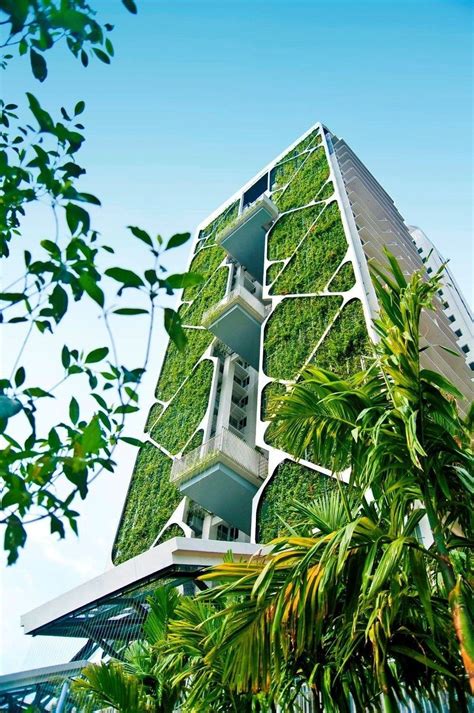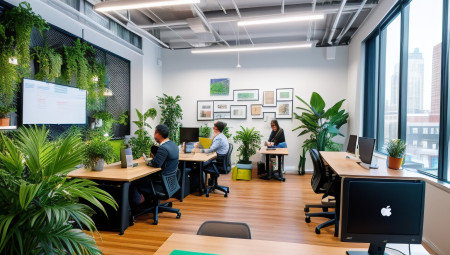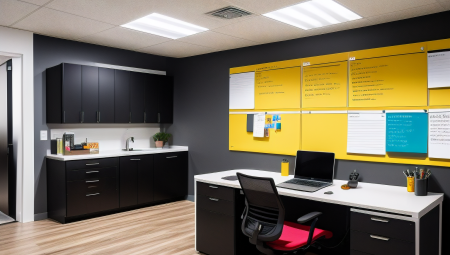In recent years, sustainable architecture has gained significant attention as we strive to create a more environmentally-friendly and energy-efficient future. This blog post, “Building Sustainable Structures: Unveiling the World of Sustainable Architecture,” will delve into the world of sustainable architecture and its significance in today’s built environment. From understanding the key principles of sustainable design to exploring green building materials and incorporating renewable energy systems, this post will provide valuable insights into the various aspects of sustainable architecture. We will also discuss the importance of energy-efficient design, maximizing natural light and ventilation, water conservation strategies, designing for zero waste and recycling, and creating sustainable landscapes. Furthermore, we will explore the benefits of sustainable architecture for communities, emphasizing its positive impact on the environment and the well-being of individuals. Join us as we embark on a journey to uncover the exciting world of sustainable architecture and its potential to shape a more sustainable future for all.
Table of Contents
Understanding Sustainable Architecture
Understanding sustainable architecture is crucial in today’s world, where the environmental impact of buildings is a major concern. Sustainable architecture focuses on creating buildings that are environmentally responsible and resource-efficient throughout their life cycle – from design and construction to operation and maintenance. It involves using sustainable materials, optimizing energy and water efficiency, and minimizing the overall ecological footprint of a building.
Key principles of sustainable architecture include incorporating passive design strategies, such as maximizing natural light and ventilation, to reduce the need for artificial heating, cooling, and lighting. Another important principle is the use of green building materials, which are environmentally friendly and have a lower impact on human health. These materials can include recycled, reclaimed, or rapidly renewable resources.
One of the main goals of sustainable architecture is to create buildings that have a minimal impact on the environment while providing healthy and comfortable spaces for occupants. This can be achieved through the careful selection of building sites, design strategies that reduce energy consumption, and the integration of renewable energy systems such as solar panels or wind turbines.
Overall, sustainable architecture aims to address the environmental, economic, and social aspects of building design. It not only reduces the negative impacts of construction and operation but also contributes to the well-being of individuals and communities. By understanding the principles and practices of sustainable architecture, we can work towards creating a built environment that is in harmony with nature and supports a sustainable future.
Key Principles of Sustainable Design
Incorporating sustainable design principles is crucial for creating environmentally friendly and efficient buildings. One of the key principles of sustainable design is energy efficiency, which involves maximizing energy performance and reducing energy consumption through efficient building design, orientation, and insulation. Another important principle is material selection, where sustainable materials with low environmental impact are chosen for construction, such as recycled or renewable materials. Additionally, water efficiency is a key principle of sustainable design, which includes strategies for reducing water consumption and incorporating water-saving technologies, such as low-flow fixtures and efficient irrigation systems. Lastly, site planning is an essential principle, involving the preservation of natural habitats and open spaces, as well as the integration of green infrastructure and landscaping for biodiversity and environmental benefits.
By incorporating these key principles of sustainable design into architectural projects, buildings can minimize their environmental footprint and contribute to a healthier and more sustainable built environment. Implementing energy-efficient strategies, sustainable material choices, water-saving measures, and thoughtful site planning not only benefits the environment, but also leads to long-term cost savings, improved occupant comfort, and a positive impact on the surrounding community.
Whether it’s through passive design strategies, energy and water-efficient technologies, or sustainable material selection, the key principles of sustainable design are essential for creating buildings that are not only environmentally responsible, but also provide a high level of performance, comfort, and well-being for their occupants. As the demand for sustainable architecture continues to grow, these principles will play an increasingly important role in shaping the future of building design and construction.
Overall, the key principles of sustainable design are vital for architects and designers to consider in order to create buildings that are environmentally responsible, resource-efficient, and beneficial to both the present and future generations.
Exploring Green Building Materials
When it comes to sustainable architecture, the choice of green building materials plays a crucial role in minimizing the environmental impact of a construction project. These eco-friendly materials are sourced and manufactured using processes that have a significantly lower carbon footprint compared to traditional building materials.
One of the key advantages of green building materials is their ability to improve indoor air quality. Unlike conventional materials that release harmful chemicals and volatile organic compounds (VOCs), these sustainable alternatives are non-toxic and do not off-gas, creating a healthier living and working environment for occupants.
Furthermore, green building materials are often more energy-efficient, contributing to reduced energy consumption and lower operational costs over the lifespan of a building. This can have a positive impact on the environment as well as the financial sustainability of a construction project.
From recycled steel and reclaimed wood to bamboo and cork, there is a wide range of green building materials available for architects and designers to choose from, enabling them to create sustainable and environmentally responsible structures that promote a greener future.
Importance of Energy-Efficient Design
In today’s world, where environmental sustainability is becoming increasingly important, the importance of energy-efficient design cannot be understated. Energy-efficient design is crucial for reducing the impact of buildings on the environment, as well as for saving resources and cutting down on utility costs.
By incorporating energy-efficient design principles into buildings, architects and designers can greatly reduce the amount of energy required to maintain a comfortable living or working environment. This not only leads to a smaller carbon footprint, but also has a range of financial benefits for building owners and tenants.
Energy-efficient design can help to mitigate the impacts of climate change by reducing the amount of energy required from non-renewable sources. By using renewable energy sources and energy-efficient technologies, buildings can contribute to a more sustainable future for our planet.
Furthermore, energy-efficient design can improve the health and well-being of building occupants by creating a more comfortable and healthy indoor environment. By optimizing factors such as natural lighting, thermal comfort, and air quality, energy-efficient buildings can enhance the overall quality of life for those who live and work within them.
Maximizing Natural Light and Ventilation
Maximizing natural light and ventilation is a crucial aspect of sustainable architecture and design. Incorporating natural light into a building can reduce the need for artificial lighting, which in turn decreases energy consumption. By strategically placing windows, skylights, and other openings, architects can optimize the amount of daylight that enters a space, creating a more comfortable and inviting environment for occupants.
In addition to enhancing the visual appeal of a building, natural light also has numerous health benefits. Exposure to natural light has been linked to improved productivity, mood, and overall well-being. By prioritizing natural light in architectural design, buildings can contribute to the physical and mental health of their users.
Maximizing ventilation is equally important in sustainable architecture. Well-ventilated spaces improve indoor air quality, reducing the need for mechanical ventilation systems and the energy they consume. Natural ventilation can be achieved through the strategic placement of windows, vents, and building orientation, allowing for the flow of fresh air without relying solely on mechanical means.
Overall, maximizing natural light and ventilation not only reduces energy consumption and improves indoor air quality but also enhances the overall well-being of building occupants. Sustainable architects and designers are increasingly prioritizing these elements to create healthier, more energy-efficient buildings for the future.
Incorporating Renewable Energy Systems
Renewable energy systems are an essential component of sustainable architecture, as they allow buildings to generate their own clean and efficient power from natural sources such as sunlight, wind, and water. Architects and designers are increasingly recognizing the importance of incorporating these systems into their projects in order to reduce reliance on non-renewable energy sources and minimize the environmental impact of buildings.
One key principle of incorporating renewable energy systems into architecture is to consider the specific renewable resources available at the building site. For example, buildings in sunny climates can benefit from solar panels to capture sunlight and convert it into electricity, while buildings in windy areas can harness wind power through the use of turbines.
In addition to the environmental benefits, incorporating renewable energy systems can also lead to significant cost savings for building owners in the long run. By generating their own energy, buildings can reduce their reliance on grid electricity and potentially even sell excess energy back to the grid, providing a source of income.
Overall, incorporating renewable energy systems into architecture is a crucial step towards creating a more sustainable and environmentally friendly built environment. By harnessing the power of natural resources, buildings can reduce their carbon footprint, minimize energy costs, and contribute to a cleaner and greener future for all.
Water Conservation Strategies in Architecture
Water conservation is a critical aspect of sustainable architecture, as it plays a vital role in reducing the overall environmental impact of buildings and infrastructure. Implementing water-saving techniques in architectural designs is essential for ensuring the efficient use of this valuable resource.
One of the key principles of water conservation in architecture is harvesting rainwater for non-potable uses such as irrigation, toilet flushing, and landscaping. This sustainable practice reduces the demand for treated drinking water, conserves resources, and minimizes the burden on municipal water supplies.
Integrating water-efficient fixtures and fittings in buildings is another effective strategy for minimizing water consumption. Installing low-flow toilets, faucets, and showerheads can significantly reduce the volume of water used without compromising functionality or comfort.
In addition to these strategies, incorporating on-site water treatment and reuse systems can further enhance the sustainable water management of architectural projects. Greywater recycling, for example, enables the recovery and treatment of wastewater for non-drinking purposes, supporting the conservation of freshwater resources.
Designing for Zero Waste and Recycling
In today’s world, the concept of zero waste and recycling has become increasingly important in the field of architecture and design. As we strive to minimize our impact on the environment, it is crucial for designers to incorporate sustainable practices into their projects. Designing for zero waste and recycling involves careful consideration of materials, construction methods, and waste management strategies to ensure that as little as possible is sent to landfill sites.
One key principle of designing for zero waste is the use of durable, long-lasting materials that can be easily disassembled and recycled at the end of their lifecycle. This reduces the need for virgin resources and minimizes the amount of waste generated from building demolition and renovation. Additionally, designers can prioritize the use of recycled and upcycled materials in their projects, further contributing to the cycle of waste reduction and reuse.
Another important aspect of designing for zero waste is implementing effective waste management systems within the built environment. This can involve on-site composting, recycling centers, and the use of designated waste separation bins to encourage proper disposal practices. By minimizing the amount of waste generated and ensuring that it is properly sorted and recycled, designers can significantly reduce the environmental impact of their projects.
Ultimately, designing for zero waste and recycling requires a holistic approach that considers the entire lifecycle of a building, from its initial construction to its eventual demolition. By prioritizing sustainable materials, waste reduction strategies, and recycling initiatives, designers can play a pivotal role in creating a built environment that is more environmentally responsible and less wasteful.
Creating Sustainable Landscapes
Creating sustainable landscapes involves designing outdoor spaces that are environmentally friendly and resilient. It is essential to consider the natural surroundings and ecosystem, as well as the local climate and resources when planning and constructing sustainable landscapes. This approach focuses on minimizing the impact on the environment while maximizing the benefits for both people and nature.
Landscapes that are sustainable prioritize the use of native plants and materials, which require less watering, chemicals, and maintenance. These plants are better adapted to the local climate and soil conditions, reducing the need for irrigation and fertilization. Additionally, sustainable landscapes incorporate strategies for managing stormwater, such as rain gardens, permeable paving, and green roofs, to help prevent pollution and flooding while replenishing groundwater.
Another important aspect of creating sustainable landscapes is the integration of wildlife habitat and biodiversity. By providing native plants, water sources, and shelter, sustainable landscapes can support a variety of species, including birds, bees, butterflies, and other pollinators, which are essential for a healthy ecosystem. This not only adds beauty to the landscape but also contributes to the overall well-being and balance of the environment.
Ultimately, sustainable landscapes are designed with longevity and resilience in mind, aiming to reduce resource consumption, promote biodiversity, and enhance the quality of life for both humans and wildlife. Whether it’s a residential garden, a public park, or a corporate campus, embracing sustainable landscape design principles can lead to healthier, more vibrant outdoor spaces that benefit the planet and its inhabitants.
Benefits of Sustainable Architecture for Communities
When it comes to sustainable architecture, the benefits are not only environmental but also extend to the communities that inhabit these spaces. Sustainable architecture prioritizes the use of renewable resources and energy-efficient practices, which ultimately leads to reduced energy costs for communities.
Additionally, sustainable architecture promotes healthier living environments through the use of non-toxic materials and designs that maximize natural light and ventilation. This contributes to improved air quality and overall well-being for community residents.
Furthermore, sustainable architecture often incorporates green spaces and eco-friendly landscaping, which not only enhances the aesthetic appeal of communities but also provides opportunities for outdoor recreation and connection with nature.
Overall, the adoption of sustainable architecture principles can lead to resilient and vibrant communities that prioritize the well-being of its residents and the environment.





